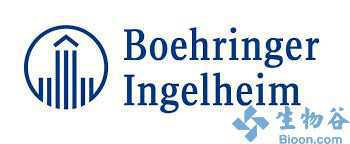诺华H7N9流感疫苗I期临床取得积极数据
2013-11-20 tomato 生物谷
诺华(Novartis)11月14日公布了其新颖的H7N9流感疫苗I期临床试验的中期数据。该研究在400名健康志愿者(18-64岁)中开展,数据显示,在接受2个剂量的15ug MF59佐剂疫苗后,85%的受试者取得了保护性免疫反应。而接受2个剂量的15ug无佐剂疫苗后,仅6%的受试者取得了保护性免疫反应。该研究的完整数据将提交至不久将出版的同行评审期刊。 该疫苗的生产采用了全规模细胞培养生产
诺华(Novartis)11月14日公布了其新颖的H7N9流感疫苗I期临床试验的中期数据。该研究在400名健康志愿者(18-64岁)中开展,数据显示,在接受2个剂量的15ug MF59佐剂疫苗后,85%的受试者取得了保护性免疫反应。而接受2个剂量的15ug无佐剂疫苗后,仅6%的受试者取得了保护性免疫反应。该研究的完整数据将提交至不久将出版的同行评审期刊。
该疫苗的生产采用了全规模细胞培养生产技术,与传统的基于鸡蛋的疫苗生产方法相比,该技术能够显著加快疫苗的生产。细胞培养技术利用了一种良好特性的哺乳动物细胞系,而非鸡蛋,来增殖病毒。
2013年3月,中国首次出现H7N9感染的报告。在中国疾控中心与全球研究人员共享病毒株之后的几天内,诺华与Craig Venter研究所的合作伙伴,首次合成了该毒株。随后,诺华生产了临床试验所需剂量的疫苗,并在今年8月启动临床试验,同时于今年10月在其位于美国、马尔堡、德国的工厂开始大规模生产。
根据世界卫生组织(WHO),自今年3月H7N9病毒出现以来,已有135例确诊病例,其中45人死亡。
英文原文:Novartis announces positive clinical trial results for novel H7N9 vaccine
-85% of subjects immunologically protected after receiving second dose of investigational cell culture vaccine when combined with proven MF59® adjuvant
-Vaccine now in large scale production highlighting rapid response capability of novel FDA licensed cell culture technology
-135 confirmed cases and 45 deaths from H7N9 virus since emergence in March according to the World Health Organization[1]
Basel, Switzerland, November 14, 2013 - Novartis announced today interim results from a Phase 1 clinical trial with its proprietary cell culture vaccine for the H7N9 avian influenza virus involving 400 healthy volunteers (18-64 years of age). The data shows 85% of subjects achieved a protective immune response after two doses of the 15 ug MF59 adjuvanted vaccine. Only 6% of subjects achieved a protective response when given two doses of the 15ug un-adjuvanted vaccine. The full data set from the trial will be submitted to a peer-reviewed journal for publication in the near future.
The vaccine was produced utilizing full-scale cell-culture manufacturing technology, an alternative technology that can significantly accelerate vaccine production versus traditional egg-based methods.[2] Cell-culture technology utilizes a well-characterized mammalian cell line rather than chicken eggs to grow virus strains.[3]
"This rapid response underscores our leadership position in pandemic preparedness" said Andrin Oswald, Division Head, Novartis Vaccines. "Thanks to our investments into innovative production technologies and adjuvants, we are now able to offer a protective solution for a potentially deadly pandemic virus within a few months after the emergence of the H7N9 virus."
Reports of H7N9 infection first emerged in China in March 2013. Novartis, along with its partners at the Craig Venter Institute, first synthesized the viral strain several days after it was shared with global researchers by the Chinese Centers for Disease Control. Novartis then produced clinical trial lots, began clinical trials in August, and initiated large-scale production in its Holly Springs (NC), USA and Marburg, Germany facilities in October.
This project has been funded in part with Federal funds from the Office of the Assistant Secretary for Preparedness and Response, Biomedical Advanced Research and Development Authority, under Contract No. HHSO1002012000141
本网站所有内容来源注明为“梅斯医学”或“MedSci原创”的文字、图片和音视频资料,版权均属于梅斯医学所有。非经授权,任何媒体、网站或个人不得转载,授权转载时须注明来源为“梅斯医学”。其它来源的文章系转载文章,或“梅斯号”自媒体发布的文章,仅系出于传递更多信息之目的,本站仅负责审核内容合规,其内容不代表本站立场,本站不负责内容的准确性和版权。如果存在侵权、或不希望被转载的媒体或个人可与我们联系,我们将立即进行删除处理。
在此留言














#I期临床#
72
#积极数据#
119
#诺华#
83
#H7N9#
63